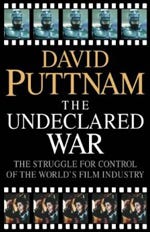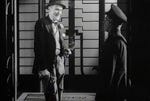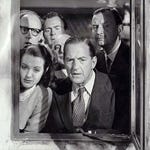How many feature films are shot in the UK each year?

I am taking requests for areas to research and I will publish the data here. If you have a question about the film industry, in the UK or internationally, then please contact me. This article is based on a question from Ed Dark, who asked "How many films are shot in the UK each year?".
In summary:
In 2012, 249 films were shot in the UK
The peak was 2010, which saw 358 films shot
A third of all films shot in the UK since 1912 were shot after 2000
The single biggest factor affecting the number of films shot is government policy
One in five films shot in the UK is a Drama
Action films account for 30% of all the money spent on films in the UK
Two thirds of the money spent on films in the UK comes from foreign sources
Films Shot In The UK by Number
The chart below shows the total number of films shot in the UK.
The chart shows four peaks; 1920s (155 films), 1936 (192 films), 1954 (150 films) and 2010 (358 films). The full explanation for each fluctuation is worthy of a film school dissertation so for brevity's sake I am going to offer just a few sentences for each. This means I'm not addressing some of the creative factors such as Ealing comedies, Hammer Horror, Cool Britannia, etc).
Peak 1: 1920 - 155 films

This first peek was natural growth in the newly-created film business. In the early days, it wasn't clear which country would dominate the film industry, and we Brits got off to a good start. Films were silent (first British 'talkie' was Hitchcock's 'Blackmail' in 1929) and the world's most famous film star was British. However, it wasn't long before the American film industry started to dominate, due to their scale, commercialism and focus on creating popular films. In 1914, 25% of films shown in the UK were British, but by 1926 this had fallen to 5%. If you are interested in reading more about the 125-year battle between the UK and Hollywood then I highly recommend David Putnam's seminal book 'The Undeclared War'.
Peak 2: 1936 - 192 films
The Cinematograph Films Act 1927

established a quota system, requiring at least 7.5% of the films shown in UK cinemas to be of British origin. In under a year, the number of UK films made almost doubled, from 48 in 1927 to 80 in 1928. In 1935, the quota was increased to 20% and the following year 192 films were shot in the UK. This increased the demand for films and lead to the creation of a number of 'Quota Quickies', i.e. films rushed out just so cinemas can stay within the law and needless to say, these films were not always of the highest quality. The quota was designed to last 10 years, so after it expired in 1937 film output dropped precipitously.
Peak 3: 1954 - 150 films

Often called the 'Golden Age of British Film', the 1950's saw a boom in comedies, war stories and, after changes to censorship rules, horror films. It was around this time that the government created the Eady Levy, a tax on UK cinema tickets which raised money to support UK filmmakers. It ran between 1950 (although the relevant law was only actually passed in 1957) and 1985. The two biggest outcomes of the Eady Levy were:
The establishment of the National Film and Television School (NFTS)
The 1970's boom in the UK porn industry
Peak 4: Post 2000

The significant increase in productions since 2000 can be attributed to a number of factors, including:
Digital filmmaking. New technologies have made it much cheaper to shoot and deliver a feature film. In 1994 when Shallow Grave was released, it was heralded as being about as cheap as a feature film could be. Its budget was £1 million, or £1.7 million adjusted for inflation. Conversely, in recent years we've seen films produced on under £50,000 take over the international box office, such as Paranormal Activity.
Micro-budget filmmaking. The figures for 2008-onward include films budgeted at under £500,000, whereas previously the Film Council / BFI did not track such small scale productions.
Government tax policy. In the early 2000's, Section 42 lead to some films being made purely for tax purposes. The government regarded some of this as an abuse of the system and changed the rules overnight, leading to a number of big products collapsing. The current Film Tax Relief is far more sustainable and is also attractive enough to bring many Hollywood productions to the UK.
How much is being spent on films shot in the UK?
You could argue that the number of films is not as important as the total amount of money being spent in the UK. Below is a chart showing the annual spend on films shot in the UK since 2003.
What types of movies are being shot in the UK?
If we purely look at the numbers of films made then Drama is the most popular genre, accounting for 20% of films shot in the UK. However, the budgets reveal a different story with 27% of the total amount spent in the UK going on Action films and only 5% on Drama.
Notes on the figures
A film's 'year' is linked to the first day of principle photography, not release date. Over the years data has been collected by a number of different organisations, meaning there are some discrepancies. These figures be collated from the BFI, the UK Film Council and IHS Screen Digest. For example, data published by the BFI in 2006 said that there were 128 films shot in the UK in 1996, whereas data published by the same organisation (BFI) in 2012 put the 1996 figure at 98. This is most likely to be due to different counting methods, rather than errors. In all such cases I have opted for the most recently published figures as the BFI revises old figures when new data is available.
Over to you
Is there anything to do with the film business you want me to investigate? If so, drop me a line.


